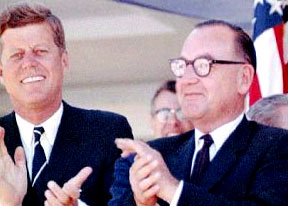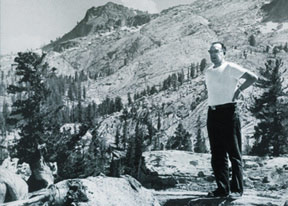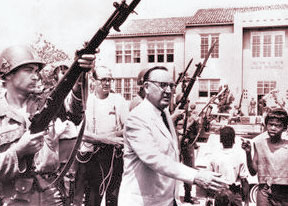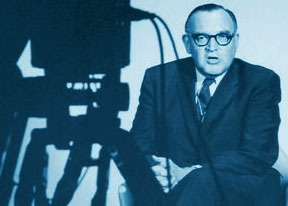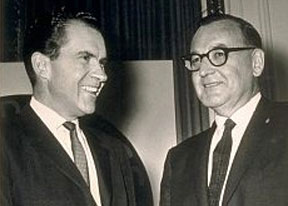
Project Synopsis
Pat Brown's story is an American tale of a young man who could not afford college, struggled to pay for night law school, but against all odds rose to hold the state's highest office. This documentary film is a journey into the heart and mind of the man who historians agree ushered California into the modern era.
Politicians from both sides of the aisle site Pat Brown as the "Architect of the Golden State." A simple chronicle of Pat's sweeping successes paints an impressive portrait: the Fair Housing Act, the Fair Employment Act, the Master Plan for Higher Education, which arguably made the state's public college and university system the best in the world, the building of highways, and what historians have called the "most significant public water project in world history." How did he do it? Why wasn't he paralyzed by bipartisan politics? How did he persuade lawmakers to pass the then highly progressive legislation? How was he able to win the public's approval to raise the necessary taxes to build massive public works? If Brown were alive today, he might answer that it was "responsible liberalism" — a phrase he coined. I believe it was a brand of politics whose character and spirit provide a viable template for what we can expect from leaders today.
Pat Brown's drive to build the Water Project offers a window into his political style at its best. This odyssey tested his leadership ability on a political obstacle course of voters, the legislature, federal government, and corporate interests. Pat sailed through, riding the momentum generated by his genuine love of people, his relentless optimism, and his bounding faith that government could be an agent of progress. He believed in his task, took risks, made deals, and tirelessly campaigned to achieve it.
Champions of Brown would sooner forget the dramatic events surrounding Pat's oversight of the death penalty case of Caryl Chessman, which generated international attention and unleashed a political backlash from all sides. Still, the unfolding episode offers a fascinating look at the vulnerabilities of leadership to the destructive potential of mass hysteria and media spin. Pat openly admitted his struggle to uphold a law to which he was morally opposed, then was branded a "tower of Jell-O," despite the fact that while he was in office, he commuted more death sentences than any California governor.
When the Free Speech Movement at Berkeley rocked the country, and the eruption of violence and destruction that was the Watts Riots brought the fight for civil rights to California, Brown lost his political footing again. A telegenic Ronald Reagan stepped onto the world stage and blamed the civil unrest on Brown's liberal politics, which effectively led to Pat's crushing defeat. Pat's departure signaled an end to an era of expansive liberal government and foreshadowed a conservative movement that continues to this day. Did Pat's leadership style fail him in the face of a new cultural era, or does the spirit and character of Brown's leadership have relevance today?
Distribution
With a running time of just under 90 minutes, the film is accessible for broadcast on a variety of channels. In addition, the film will be used in educational settings and screened at film festivals. We've already premiered at the Newport Beach Film Festival, and have screened at a host of other events. An accompanying educational curriculum, My California Now, is being developed for use at middle and high school levels to encourage youth to consider qualities of leadership they admire that exist in their own families and communities.
Format & Style
The project was shot primarily on HD24P video with some mini-DV to capture a behind-the-scenes look at the family, plus film to make real the great American landscapes that inspired Pat Brown. This intimate portrait of Brown draws upon the family photos and film archives, private letters, and interviews. We tap the memories of those who knew Brown and will enlist journalists, historians, contemporary thinkers and politicians to ground the narrative and offer a critical perspective from a wide range of angles: political, philosophical, spiritual, and psychological. The interviews are woven together by archival footage, and audio recordings of Pat's oral history. Innovative uses of sound and music bring this history alive.
Audience
This uplifting and entertaining biography will appeal to younger and older audiences alike. The film resonates beyond the borders of California as the focus on the global issues of water and the death penalty provide a critical focus that illuminates relevant contemporary leadership issues.

